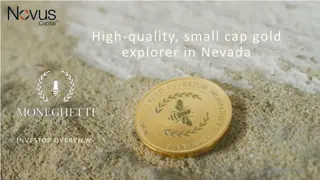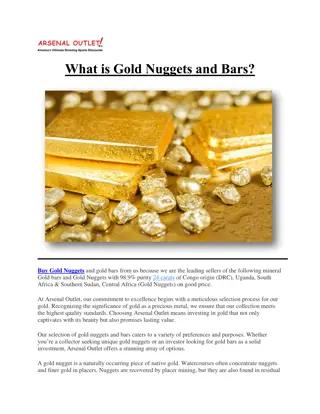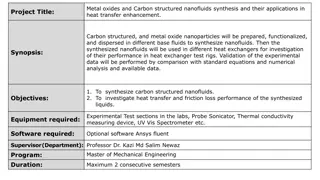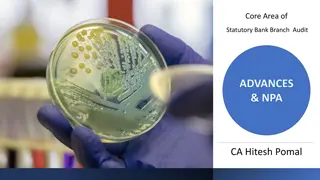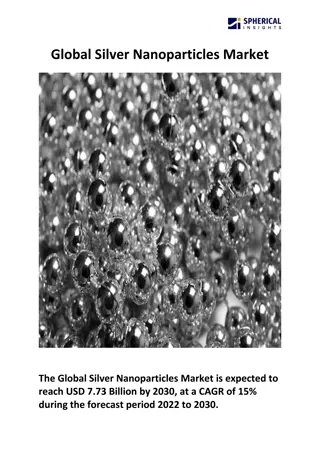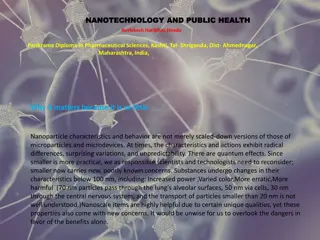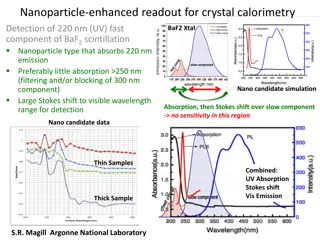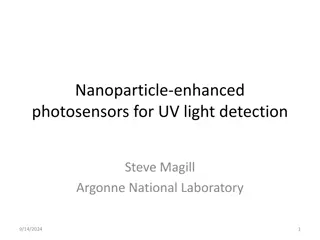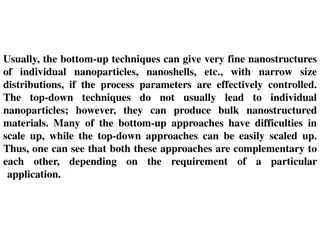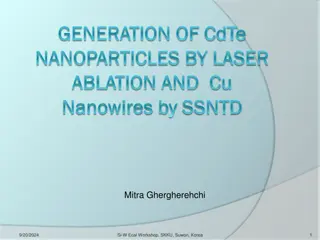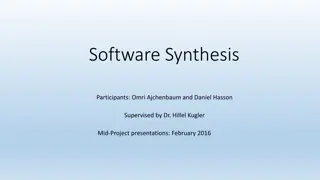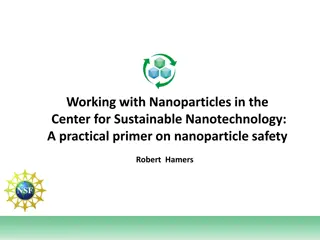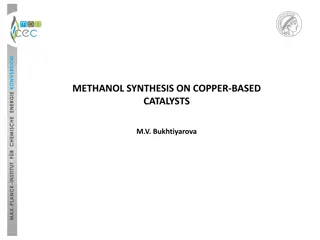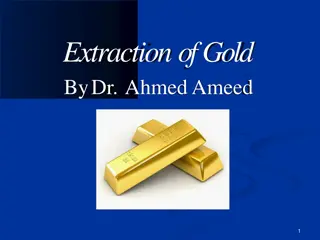Recent Advances in Gold Nanoparticles and Nanofluids Synthesis and Applications
Gold nanoparticles (AuNPs) and nanofluids are attracting significant interest due to their unique properties and diverse applications. This article discusses the synthesis methods, optical properties, and applications of gold nanoparticles, as well as the preparation techniques and characteristics of nanofluids. The chemical reduction method for synthesizing gold nanofluids is highlighted, emphasizing the advantages and procedure involved. Additionally, the concept of surface plasmon resonance in metallic nanoparticles is explained, showcasing their relevance in various fields.
Download Presentation

Please find below an Image/Link to download the presentation.
The content on the website is provided AS IS for your information and personal use only. It may not be sold, licensed, or shared on other websites without obtaining consent from the author. Download presentation by click this link. If you encounter any issues during the download, it is possible that the publisher has removed the file from their server.
E N D
Presentation Transcript
GOLD NANOPARTICLES - SYNTHESIS, OPTICAL PROPERTIES AND APPLICATIONS DR. RAJESH KUMAR B ASSISTANT PROFESSOR DEPARTMENT OF PHYSICS NIRMALA COLLEGE MUVATTUPUZHA KERALA
Gold Nanoparticles Gold colloids have been known since ancient times for their fascinating properties and colours Why is there such great current interest ingold nanoparticles (AuNPs) Facile methods of synthesis and Stability in a wide variety of solvents High degree of control over size and shape Wide range of medical and industrial applications 2
Nanofluid Nanofluids a simple product of the emerging world of nanotechnology are suspensions of nanoparticles (1 100nm) in conventional base fluids such as water, oils, or glycols Synthesis of Nanofluid Single-step technique: The Two-step technique: The two step single step simultaneously method starts with producing NP by makes and disperses the NPs one of the physical or chemical directly into a base fluid processes, and proceeds to best for metallic nanofluids disperse them into a base fluid Nanoparticles agglomeration is Good for oxide nanofluids minimized 3
Synthesis of Gold nanofluid - Chemical Reduction Method The chemical reduction method presents, with respect to other routes, several advantages, mainly related to Easy synthesis procedure Reproducibility of the method Stability of the prepared sol 4
Synthesis of Gold nanofluid - Chemical Reduction Method Materials Gold chloride trihydrate (HAuCl4.3H2O) Sodium citrate tribasic dihydrate (Na3C6H5O7.3H2O) Double-distilled water Procedure for the preparation of AuNPs To the rapidly-stirred boiling 100 ml of 1 mM HAuCl4 solution, 10 ml of 38.8 mM trisodium citrate dihydrate (Na3C6H5O7.3H2O) solution is quickly added Gold Nanofluid The solution colour changed from yellow to black and then to red or purple colour depending on the sizes of the NPs 5
Surface Plasmon Resonance Surface plasmon resonance is the collective oscillation of the conduction electrons induced by the incident electric field (light) When an external light wave is incident on a metal nanoparticle, its electric field E0 periodically displaces the sphere s electrons with respect to the lattice, resulting in oscillating electron density 6
Applications of Gold nanoparticles Industrial cooling Biomedical applications applications Biosensing Carriers for drug delivery applications Surface-enhanced To produce thermal Raman scattering tumor ablation Catalytic activity Antibacterial activity 7
Thank You Thank You 8


